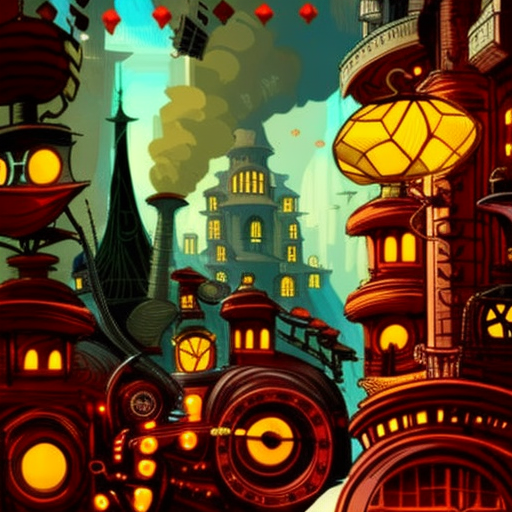The Invention of Hugo Cabret: A Heartwarming Tale of Mystery, Adventure, and the Power of Imagination
Set in 1930s Paris, “The Invention of Hugo Cabret” by Brian Selznick is a captivating story that seamlessly combines elements of historical fiction, mystery, and adventure. This beautifully illustrated novel follows the journey of Hugo Cabret, a young orphan who lives in the walls of a train station, as he unravels the secrets of a broken automaton and discovers the transformative power of storytelling.
A World of Hidden Wonders
At the heart of the story is the enchanting world of the train station, a bustling hub filled with hidden wonders and eccentric characters. Hugo, a skilled clockmaker like his late father, spends his days maintaining the station’s clocks while secretly working on repairing the automaton, a mechanical man his father had found before his untimely death. As Hugo navigates the labyrinthine passageways and hidden chambers of the station, readers are transported to a world where imagination and reality intertwine.
An Unlikely Friendship
Hugo’s solitary existence takes an unexpected turn when he crosses paths with Isabelle, a spirited girl who possesses a key that holds the key to unlocking the mystery of the automaton. Together, they embark on a thrilling adventure, uncovering long-lost memories and unearthing the truth about Hugo’s past. As their friendship deepens, Hugo and Isabelle discover the power of connection and the importance of helping one another heal from their respective traumas.
The Magic of Cinema
One of the most captivating aspects of “The Invention of Hugo Cabret” is its exploration of the magic of cinema. Through his encounters with Georges Méliès, a forgotten filmmaker and former illusionist, Hugo learns about the transformative power of storytelling and the ability of movies to transport audiences to new worlds. As the story unfolds, readers are treated to stunning visual representations of Méliès’ films, showcasing the wonder and awe that cinema can inspire.
Throughout the book, Selznick’s intricate illustrations play a crucial role in conveying the emotions and actions of the characters, effectively blurring the line between words and images. This unique storytelling approach adds an extra layer of depth to the narrative, immersing readers in the richly imagined world of Hugo Cabret.
Key takeaways from “The Invention of Hugo Cabret” include:
- The importance of perseverance and resilience in the face of adversity.
- The transformative power of friendship and human connection.
- The magic of storytelling and the ability of books and movies to transport us to new worlds.
- The significance of embracing our own unique talents and passions.
As the story reaches its heartwarming conclusion, readers are left with a profound sense of hope and the belief that even the most broken pieces can be mended. “The Invention of Hugo Cabret” reminds us that within the depths of our imagination lies the power to unlock the mysteries of the world and find our own place within it.
“I like to imagine that the world is one big machine. You know, machines never have any extra parts. They have the exact number and type of parts they need. So I figure if the entire world is a big machine, I have to be here for some reason. And that means you have to be here for some reason, too.” – Brian Selznick, The Invention of Hugo Cabret
In conclusion, “The Invention of Hugo Cabret” is a captivating and visually stunning tale that celebrates the power of imagination, friendship, and the magic of storytelling. Selznick’s masterful blend of words and illustrations creates a truly immersive reading experience that will leave readers of all ages spellbound.












